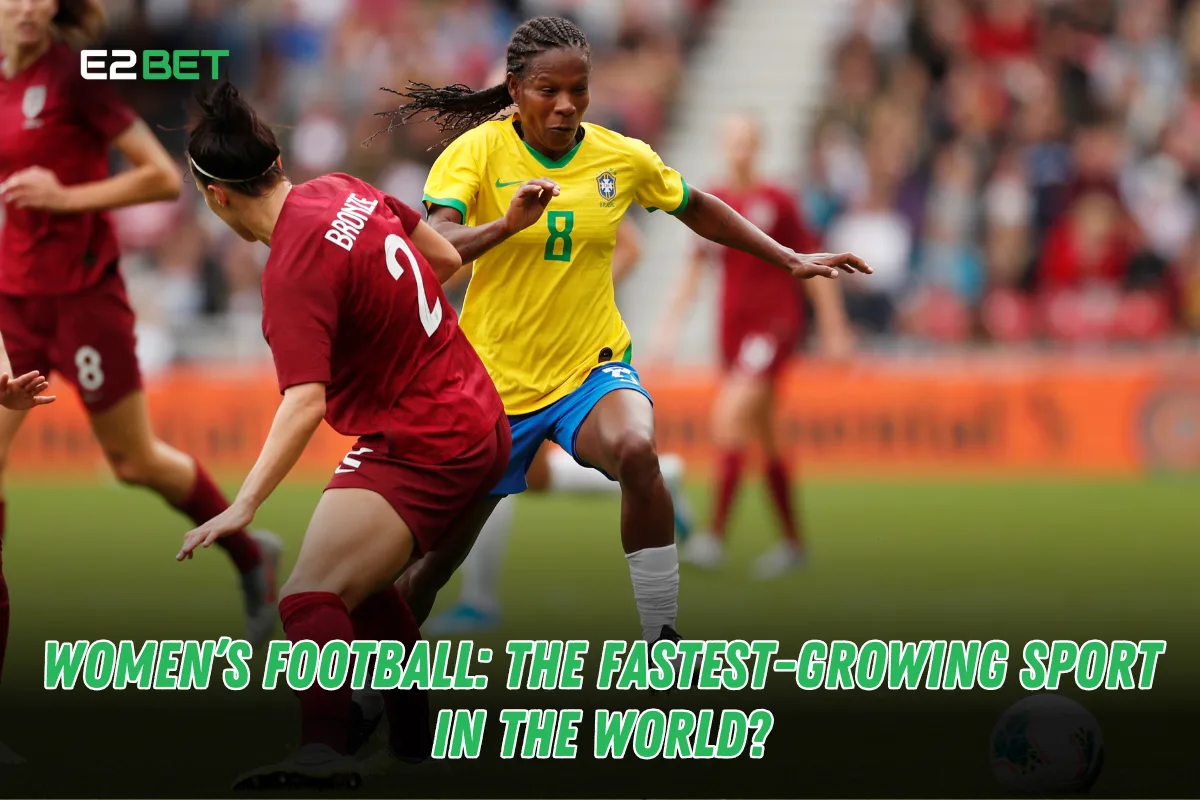Women’s football has rapidly evolved over the past few decades, breaking barriers and shattering records. Once overlooked, it has now emerged as one of the fastest-growing sports worldwide. From increased media attention to massive investments, the growth of women’s football is undeniable. But what factors have fueled this rise, and what does the future hold for the sport? Let’s explore this exciting transformation.
A Brief History of Women’s Football
Early Beginnings
Women’s football dates back to the late 19th and early 20th centuries. In 1921, the Football Association (FA) in England banned women from playing on official football grounds, significantly hindering its progress. However, passionate players and fans kept the sport alive.
Overcoming Challenges
For decades, women’s football struggled with a lack of funding, societal prejudices, and minimal media attention. The turning point came in the late 20th century, with the first FIFA Women’s World Cup in 1991, giving female players a global platform.
Key Milestones
- 1991: The inaugural FIFA Women’s World Cup
- 1996: Women’s football included in the Olympics
- 2019: Record-breaking audience for the FIFA Women’s World Cup
- 2023: FIFA expands the Women’s World Cup to 32 teams
Why Is Women’s Football Growing So Fast?
Increased Media Coverage
Major broadcasters like ESPN, BBC, and Fox Sports now provide extensive coverage of women’s football. The UEFA Women’s Champions League and FA Women’s Super League (WSL) have seen record-breaking viewership, proving that audience engagement is growing.
Investment and Sponsorships
Brands like Nike, Adidas, and Visa have recognized the massive potential of women’s football, pouring millions into sponsorships. Increased investment has led to better infrastructure, training facilities, and higher wages for female footballers.

Rise of Women’s Sports Popularity
The popularity of women’s football is soaring, with increasing ticket sales and more people tuning into matches. Events like the FIFA Women’s World Cup and the National Women’s Soccer League (NWSL) are breaking records in attendance and TV ratings.
Better Infrastructure and Training
Football academies are now offering high-level training to young female players, ensuring that they receive the same opportunities as their male counterparts. Countries investing in grassroots football are seeing a rise in female participation.
Key Tournaments and Their Impact
FIFA Women’s World Cup
The FIFA Women’s World Cup is the biggest event in women’s football, drawing millions of fans worldwide. The 2019 edition reached over 1 billion viewers, proving that women’s football is now a global phenomenon.
UEFA Women’s Champions League
This European club tournament showcases top talent and has become a prime attraction for football fans. With more sponsors and increased TV rights, the UEFA Women’s Champions League continues to grow.
Domestic Leagues Gaining Recognition
Leagues like the FA Women’s Super League, NWSL, and Division 1 Féminine have gained popularity. These leagues are attracting top female footballers, increasing competition, and making women’s football more entertaining.
Challenges Faced by Women’s Football
Gender Discrimination and Stereotypes
Despite significant progress, stereotypes about women’s football still exist. However, high-profile athletes like Megan Rapinoe and Alexia Putellas are changing perceptions by proving their excellence on the field.
Pay Disparity and Financial Inequality
The gender pay gap in football remains a major issue. While investment in women’s football is growing, financial disparities between male and female players still exist, with women earning significantly less.
Limited Resources in Some Countries
While developed nations are investing in women’s football, some countries still lack the necessary infrastructure and financial support for female players.
Success Stories of Female Footballers
Megan Rapinoe and Equal Pay Advocacy
Megan Rapinoe has been a vocal advocate for equal pay in football, using her platform to push for gender equality.
Alexia Putellas: A Rising Star
The Spanish footballer won the Women’s Ballon d’Or and has been instrumental in the success of women’s football globally.
Marta: A True Legend
Brazil’s Marta is one of the highest goal-scorers in World Cup history, inspiring millions of young girls worldwide.
The Future of Women’s Football
Predictions for the Next Decade
With increasing investment, rising attendance, and growing media coverage, the future of women’s football looks brighter than ever.
Expanding Leagues and Tournaments
New leagues and competitions are being introduced to keep up with the growing demand. The FA Women’s Super League and NWSL continue to expand, attracting top talent.
Equal Pay and Better Opportunities
Advocacy for equal pay is gaining momentum, and with support from sponsors and federations, we can expect better financial stability for female footballers in the near future.
How Can You Support Women’s Football?
- Watch matches and buy tickets: Increased viewership leads to more investment in women’s football.
- Promote grassroots football: Supporting young female players ensures continued growth.
- Advocate for equal pay: Raising awareness about gender disparities in sports helps push for positive change.
Conclusion
Women’s football has come a long way and continues to break barriers. With increased investment, media coverage, and fan engagement, it is undoubtedly one of the fastest-growing sports in the world. The time is now to support and celebrate women’s football!
FAQs
1. When did women’s football become popular?
Women’s football gained popularity in the late 20th century, especially after the first FIFA Women’s World Cup in 1991.
2. What are the biggest women’s football tournaments?
The FIFA Women’s World Cup, UEFA Women’s Champions League, and National Women’s Soccer League (NWSL) are among the top competitions.
3. Who is the best female footballer of all time?
Legends like Marta, Abby Wambach, and Birgit Prinz have left an incredible legacy, but the best player is often debated.
4. Why is women’s football not as popular as men’s?
Historical discrimination, lower investment, and lack of media coverage contributed to its slower growth, but the gap is closing.
5. How can I start supporting women’s football?
You can support by watching matches, following female players on social media, and advocating for equal opportunities in sports.